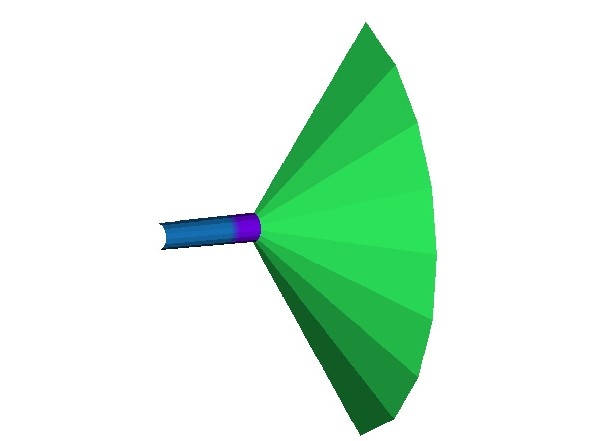
A half cut away of the hollow cathode thruster used in this project can be seen below.

The cylinder of the hollow cathode is 3.6 mm in diameter and 15.0 mm in length. From 0.0 mm to 120.0 mm of the cylinder is the blue section a non-reactive tube along, which the particles simply transverse. From 120.0 mm to 150.0 mm of the cylinder is the purple section, which is the cathode. The cathode is heated to around 1500 degrees and when it reaches that temperature it begins to release electrons. The electrons are injected into the path of the xenon particles for the purposes of electron bombardment. The electrons impact with the neutral xenon molecule and knock an electron off of it. The loss of the electron creates an ion of xenon with a +1 charge.
The cone of the hollow cathode has an initial diameter of 3.6 mm, a final diameter of 49.0 mm, and a length of 15.0 mm. The cone, all green, is the anode of the system, which absorbs the electrons. The outer edge of the green section is where the grid of the thruster will be. The grid is a metal circle with regular hole spacing. A current is applied to the grid and an electric field is created to accelerate the xenon ions. The holes in the grid allow the accelerated ions to exit the engine.
The xenon gas is injected into the system in the center at the beginning of the blue section. The electrons are injected into the system from the purple section of the cylinder. The electrons are absorbed if they contact the green section.